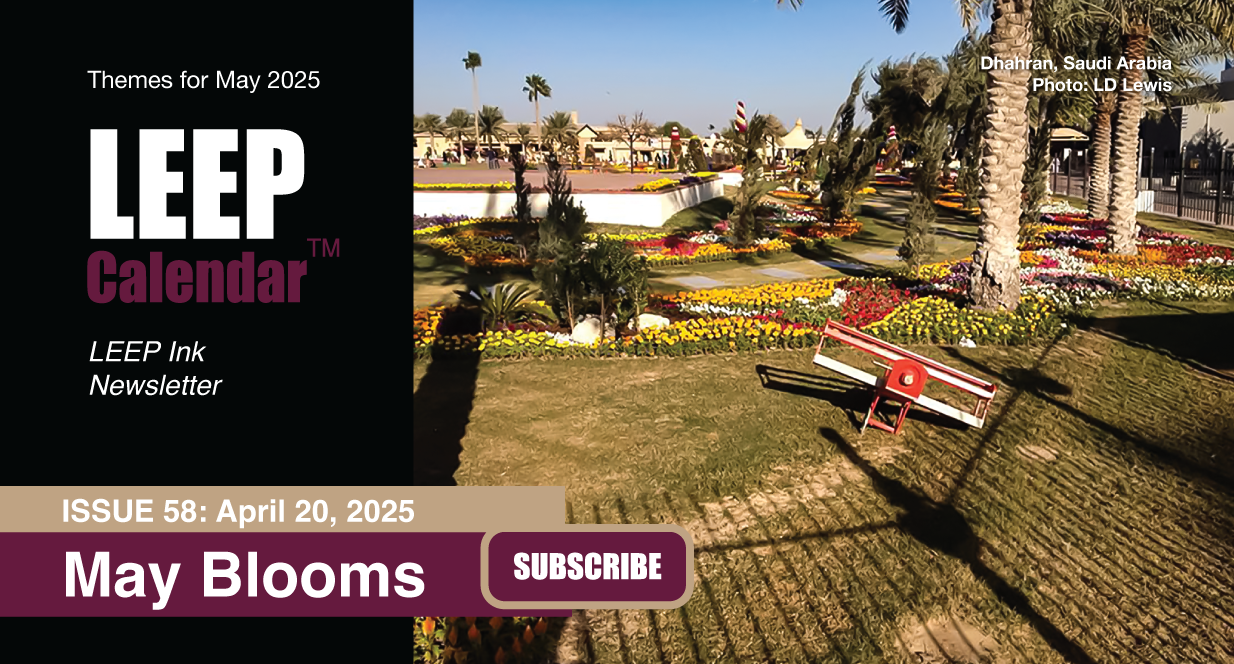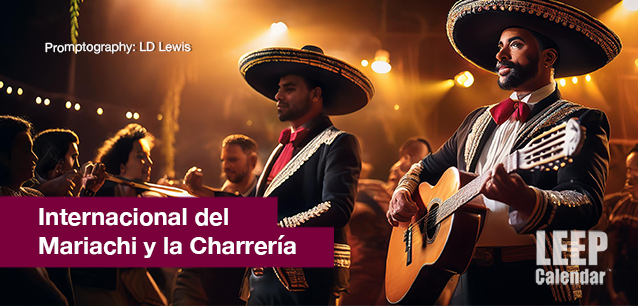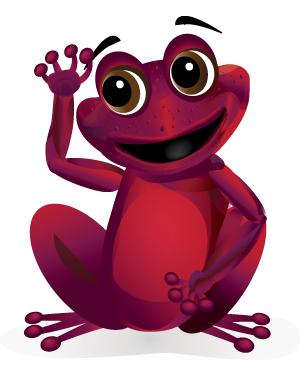 AD
AD
Today is: July 05
Scroll to explore events active on this date.
Additional Events on LEEP
LEEP INK FEATURES

May Blooms: Events in May 2025
Along with October, May is one of the most densely packed months of the year. It's before the summer humidity and the last whole month of the school year. The weather is warming in t...

Sweet June 2025
The solstice on the 20th marks the onset of summer (Northern Hemisphere) or winter (Southern Hemisphere). Many people, particularly in Europe, North America and Asia, will be embarking o...

Events in April 2025
Spring has sprung in the north, and the first hints of Autumn are on the horizon in the south. April is the month spring (or fall) gets underway, and it is filled with religious celebrations, including the Mu...
About Internacional del Mariachi y la Charrería
Competitions & Awards , Mexico & Central America
Ends: Sep 03, 2025
DESCRIPTION:
FOR THE LOVE OF SONG AND COWBOYS
MÉXICO'S INTERNACIONAL DEL MARIAACHI Y LA CHARRERÍA
The Internacional del Mariachi y la Charrería in Guadalajara, México, is a unique celebration that beautifully blends the rich traditions of mariachi music and charrería. Established in 1994, this vibrant festival, which attracts more than 250,000 people annually, has grown into one of Mexico's most significant cultural events. Participants in the festival include renowned mariachi groups such as Mariachi Vargas de Tecalitlán and Mariachi Nuevo Tecalitlán, among others, who compete and perform in various events.
The Chamber of Commerce of Guadalajara is the driving force behind this grand event, which occurs annually in late August and early September. The festival, conceived to preserve and promote the cultural practices of mariachi music and charrería, has expanded over the years. It now features concerts, parades, competitions, and workshops, bringing together top mariachi ensembles and charro performers from across México and beyond.
WHAT IS MARIACHI MUSIC?
Mariachi is a traditional genre of Mexican music that has become one of the most recognizable symbols of Mexican culture. It encompasses a style of music, a type of ensemble, and a cultural expression that is deeply rooted in Mexico's history and social life.
Mariachi music, with its origins in the western region of México, particularly in the states of Jalisco, Nayarit, Colima, and Michoacán, during the 18th century, is a testament to México's rich history and social life. It began as a rural folk music tradition, performed by small ensembles, typically featuring string instruments like the vihuela (a small guitar), guitarrón (a large bass guitar), violins, and sometimes harps. Mariachis play at local festivals, weddings, and religious events, and the lyrics usually reflected themes of love, nature, and the life of the rural communities.
In the early 20th century, mariachi music underwent significant changes as it moved from the countryside to the cities. The ensembles grew and started incorporating new instruments, most notably trumpets, which added a distinctive, brassy sound to the music. The genre also adopted more formal attire, with musicians wearing the now-iconic charro suits—elaborate outfits adorned with silver buttons and embroidery inspired by the traditional dress of Mexican cowboys. This evolution is a testament to the dynamic nature of Mexican culture.
Mariachi music gained national prominence during the Mexican Revolution (1910-1920), as it became associated with the emerging sense of Mexican identity and pride. By the mid-20th century, mariachi had solidified its place in Mexican popular culture, thanks partly to its frequent use in films, radio, and television. Mariachi became synonymous with national celebrations, such as Independence Day and Cinco de Mayo, and it continues to play a central role in significant life events like weddings, birthdays, and religious ceremonies.
INSTRUMENTS AND STYLE
A typical mariachi ensemble today combines violins, trumpets, vihuela, guitarrón, and sometimes a guitar or harp. The music is characterized by lively rhythms, complex harmonies, and emotive vocal style. The repertoire ranges from traditional folk songs (ranchers and sones) to more modern compositions, boleros and huapangos.
Mariachi songs often tell stories, evoking strong emotions through their lyrics and melodies. The themes can range from love and loss to patriotism and religion. The performances are frequently theatrical, with musicians playing, singing, and sometimes even dancing as they move through the audience, creating an interactive and festive atmosphere. This power of music in storytelling is a unique aspect of mariachi culture.
While mariachi remains a vital part of Mexican culture, its influence has spread globally. Mariachi ensembles perform in many countries worldwide, particularly in the United States, where Mexican-American communities have embraced and continued the tradition. In 2011, UNESCO recognized mariachi as an Intangible Cultural Heritage of Humanity, acknowledging its importance in maintaining Mexican cultural identity and fostering cultural exchange.
WHAT IS CHARRERÍA?
The festival also features charros, skilled horsemen and women who showcase their expertise in traditional equestrian sports rooted in the working practices of cattle ranchers. Their competition is a charrería.
Charrería is a traditional Mexican equestrian sport with deep roots in the country's rural culture, particularly within ranching communities. It is often considered Mexico's national sport and is a vibrant display of horsemanship, skill, and tradition.
Charrería originated from the practices of the charros, Mexican cowboys who worked on haciendas, or large estates, during the colonial period. These charros developed specialized skills in cattle herding, roping, and horseback riding, eventually becoming competitive events. The sport began to take a more formalized structure in the 19th century, as charros started organizing events to showcase their abilities.
A typical charrería event, known as a charreada, consists of a series of competitive events called suertes, or "tricks," each designed to test different aspects of horsemanship and cattle handling. Some of the most common suertes include:
—Cala de Caballo:
A test of a horse's training and responsiveness.
—Piales en el Lienzo:
A roping event where the charro must lasso a running horse by its hind legs.
—Coleadero:
A bull-tailing event where the charro attempts to bring down a bull by pulling its tail.
—Jineteo del Toro:
Bull riding.
—Terna en el Ruedo:
A team event involving bull roping.
—Jineteo de Yegua:
Riding a wild mare.
—Manganas a Pie y a Caballo:
Lassoing a horse's forelegs from either on foot or horseback.
—El Paso de la Muerte:
The "Pass of Death," where a charro must leap from one horse to another, untamed, at a full gallop.
Charrería is more than just a sport; it is a cultural expression that reflects the Mexican countryside's values, skills, and traditions. The charros, dressed in elaborate and distinctive outfits with wide-brimmed sombreros, silver-studded jackets, and embroidered trousers, symbolize national pride.
In 2016, UNESCO recognized charrería as an Intangible Cultural Heritage of Humanity, acknowledging its importance in Mexican culture and its role in fostering community identity and continuity of tradition.
Today, the Internacional del Mariachi y la Charrería in Guadalajara continues to captivate audiences through culture, history and thrilling displays of skill. The event continues to evolve, drawing in new audiences while staying true to its mission of celebrating the enduring spirit of mariachi and charrería.
VIDEOS
SUPPORTING DOCUMENTS
Currently, this event does not have supporting documents.
ADDITIONAL IMAGES
Currently, this event does not have supporting images.
Where would you like to go now?
 AD
AD


/footer-logo.svg)
